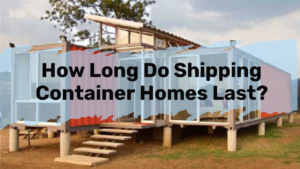Which States Allow Shipping Container Homes?
The shipping container housing trend has been ongoing in several states in the US for a number of years. The many reasons include its affordability, usability, and efficiency. Container homes are not only safe to live in, but they also come in varied sizes and styles. They may be made for luxury or designed as an eco-friendly abode.
In fact, container homes are among the structures that follow the Tiny House Movement – an architectural and social initiative that promotes simple living of environmentally-friendly lifestyles. Also referred to as an innovative project, shipping container homes can be built sustainably with all the necessities that every standard home provides.
What Are Shipping Container Homes?
Container homes are structures built from steel shipping containers that are primarily used to transport goods on trucks, trains, and vessels. The smallest ones are about 100 square feet of floor space while the larger ones could reach up to 1,400 square feet.
These containers can be used for a lot of things other than residential homes in the United States. In fact, some containers used are for business offices, apartment buildings, studios, and bars thanks to its sturdy, spacious, and long-lasting materials.
Generally, they are transformed into occupiable spaces out of the interest in cost-saving alternative living and recycling ideas.
Most container homes built are prefabricated which makes building an abode or office faster than constructing a standard American house.
In fact, some companies even deliver the this container and its essential contents right to your doorstep in a matter of 10 weeks! You can even order them out on Amazon with just one click! Talk about ease of access!
Opting to live in shipping container homes also gives you the benefit of cost-cutting especially when building one would only cost you an average minimum of $15,000! That is significantly lower in value compared to building a standard home which could cost you a median price of $45,000.

Despite the many advantages of living in a container home, not all United States localities allow this type of alternative housing. There are certain zoning codes and building regulations distinct to every state that you need to check first before building your very own home.
Things To Consider Before Building Shipping Container Homes

Just like building a conventional house, you always need to check with your local building department if they would allow you to build a shipping container home.
Some states allow the construction of container homes if they would be recognized as Accessory Dwelling Units (ACUs). These are solo units built within an existing residential lot.
It is important to determine first what type of shipping container home you are going to build. Most people consider these types of abodes as a simple cabin while others find them as custom-built residential homes.
Distinguishing the structure from cabins, recreational vehicle homes (RVs), and tiny houses on wheels or mobile homes, lets you figure out which regulations cover your property.
Zoning codes, for example, are what break up urban land into different portions which would serve as the basis of the locality’s choice of structures that can be constructed there.
It is basically utilized by governments to prioritize growth and development and control the density of each district. To explain it in a simpler term, zoning codes are the reasons why bars and pubs are usually found farther away from residential neighborhoods and places of worship.

What Are Usually Covered by Restrictions?

First, the locality looks into the color, style, and material used for the parts of the house. They would also review its accessibility, the square footage, the number of bedrooms, and the maximum allowable height, among others before your container home would be given a go-signal.
Another consideration is the site offset which concerns the property line and its distance from neighbor’s properties. They would also check the type of foundation, depth, and height above ground level for the purpose of ensuring that it would be safe from flooding and other natural disasters and environmental hazards.
The types of plants allowed in your property, the number of trees cut to pave way for your construction, the means of egress, fire and smoke protection, electrical, mechanical, and plumbing details would also be reviewed as per standards.
Tiny homes are also generally built to be eco-friendly. Therefore, the locality also checks if the container home follows energy conservation.
Lastly, they would also ensure that the structure is compliant with the requirements depending on the climate of the location such as structural reinforcements including wind and snow loads.
The Current Status Of Container Homes In The US
According to the Freedom in the 50 States report, residents in Tennessee enjoy land freedom compared to other states in the country.
There is minimal local interference and building regulations making it the perfect location for container homes. Most of its land areas have sufficient access to clean water and the farming season is more than 250 days.







